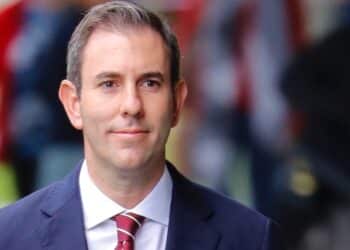A new report has predicted that the next decade of wealth management will be focused on a transition towards a scalable and modular proposition.
The report, jointly produced by Oliver Wyman and Morgan Stanley, said that the industry was on the cusp of an evolution towards ‘Wealth Management 3.0’.
According to the firms, wealth managers will need to diversify and modularise their service and operating models to be able to take advantage of significant potential revenue pools across different wealth brackets and customer segments.
“Facilitated by technology, wealth managers can make superior financial advice and investments accessible to a more diverse client base at lower, differentiated costs to serve,” the report said.
“Clients can pick and choose different modules of advice, products and services to create their own, personalised solution. Wealth managers will support their clients along the journey through different channels, from human to digital-led.”
Oliver Wyman and Morgan Stanley suggested that transformation was set to accelerate as complexity, revenue margin and cost pressures intensified.
“Over the last couple of decades, wealth managers have successfully moved to more digitalised, data and IT-driven models (‘Wealth Management 2.0’) from their brick-and-mortar, paper-based, white-glove only origins (‘Wealth Management 1.0’),” they said.
“The next stage will be defined by substantial modularisation and diversification of offerings, service models and operating models, allowing lower, more differentiated costs to serve – all facilitated by technology.”
For Australia, Oliver Wyman said that there was a significant gap in the market regarding the Wealth Management 3.0 revolution, which it said presented substantial opportunities.
The report also suggested that firms leading the transition to Wealth Management 3.0 were investing “a high single-digit percentage” of their revenue towards this transformation and would continue to do so for the next three to five years.
Lower high-net-worth (HNW) segments ‘undervalued and underinvested’
The report also indicated that wealth managers may be leaving money on the table by focusing on ultra-high-net-worth (UHNW) and higher high-net-worth (HNW) clients.
It estimated a potential revenue pool of US$230 billion ($332.0 billion) from the lower HNW and affluent segments – with wealth between US$300,000 ($433,000) and US$5 million ($7.2 million) – of which only 15 to 20 per cent has been penetrated by wealth managers.
“For over a decade, many wealth managers have put their growth focus on the ultra high UHNW and higher HNW segments, thus not prioritising less wealthy clients,” the firms said.
“The lower HNW and affluent segments have been undervalued and underinvested in, which has limited value creation at the industry level.”
Only those with a premium brand or strong investment banking capabilities had been able to profitably grow in the top wealth band segments as the market overall is notably difficult to scale and remain highly competitive, Oliver Wyman and Morgan Stanley stated.
UHNW investors – those with over US$50 million ($72.2 million) in wealth – are expected to account for more than 40 per cent of total wealth growth by 2026.
However, this segment is also forecasted to account for less than 15 per cent of the overall potential wealth management revenue pool and less than 20 per cent of its growth.
In comparison, the affluent and low HNW client segments are predicted to create about US$45 billion ($64.9 billion) of new revenues and account for around 60 per cent of the total wealth management revenue pool by 2026.
The report noted that not all wealth managers would choose to pivot towards this potential revenue opportunity in the future.
“We expect certain wealth managers with a premium offering to continue focusing on delivering high-touch, human-led and hybrid advice to upper HNW and UHNW clients, with some support by digital channels,” Morgan Stanley and Oliver Wyman said.
“The opportunity to deliver solutions to affluent investors might not be worth the investment spend and strategic change required (for example, due to lack of economies of scale or fear of potential brand dilution).”




Unless to utter BS Gordian Knot of Govt REGS are significantly removed, nothing will change.
No one can comply with the multi layered levels of Govt rubbish, no one.